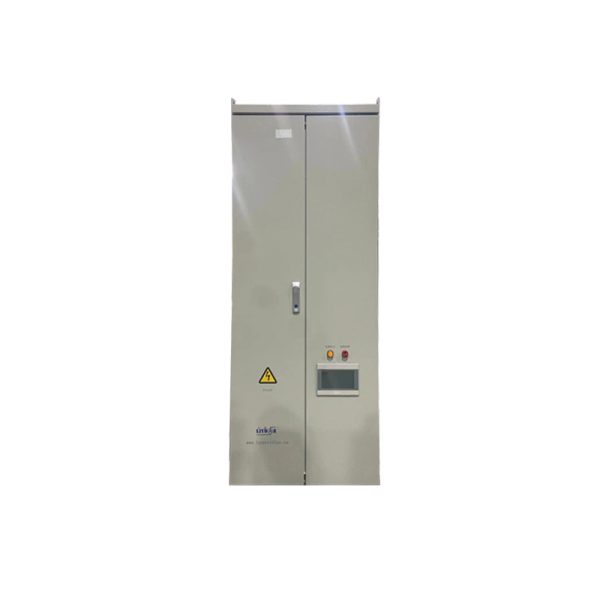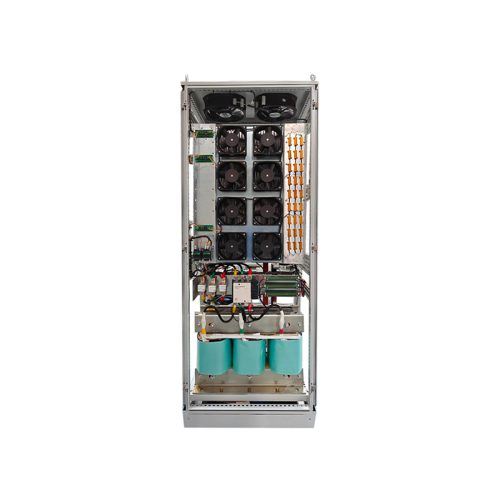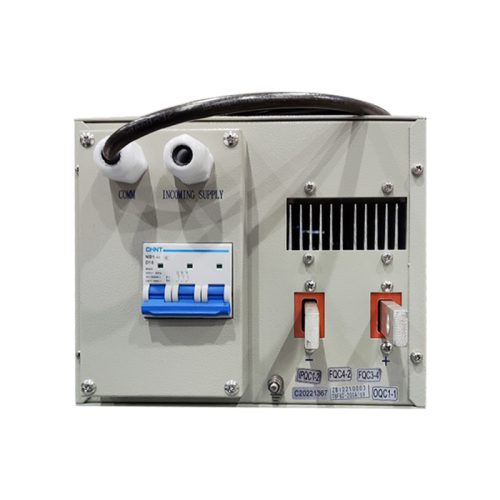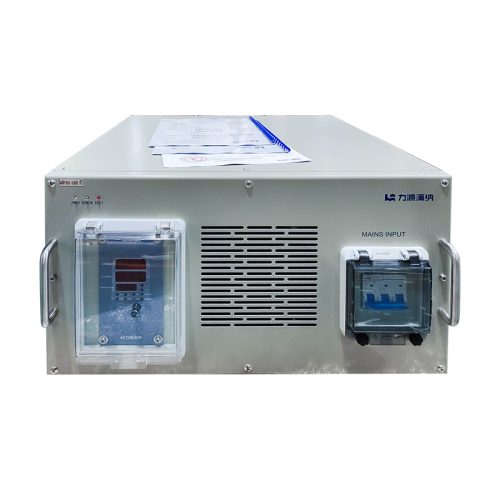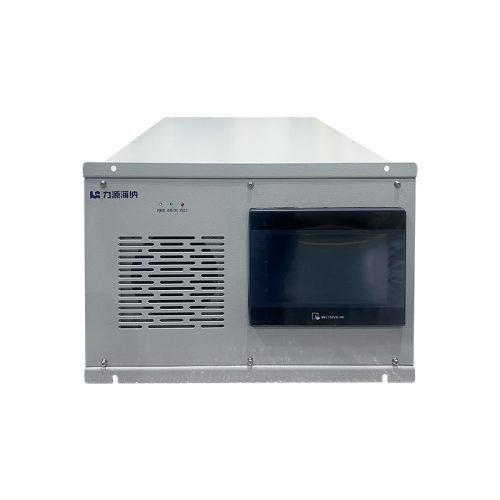» Product Description
In a 200V 500A plasma plating rectifier, the AC input voltage is first transformed and filtered through a rectifier circuit to obtain high-voltage DC power. The high-voltage DC is then fed into a BUCK converter to regulate the output voltage. The control system continuously monitors both output voltage and current, using this data in a closed-loop feedback mechanism. Based on the feedback, the system generates precisely timed PWM signals to control the BUCK converter’s switching. This ensures tight regulation of either voltage or current output – a fundamental requirement for achieving uniform zinc deposition in precision electroplating processes.
» Product Applications
Manufacturers widely use electroplating rectifier equipment for various surface treatment applications, including PCB electroplating, hard chrome coating, copper plating, nickel plating, zinc plating, gold plating, tin plating, and silver plating, among other metal finishing.
1.Field application diagram:
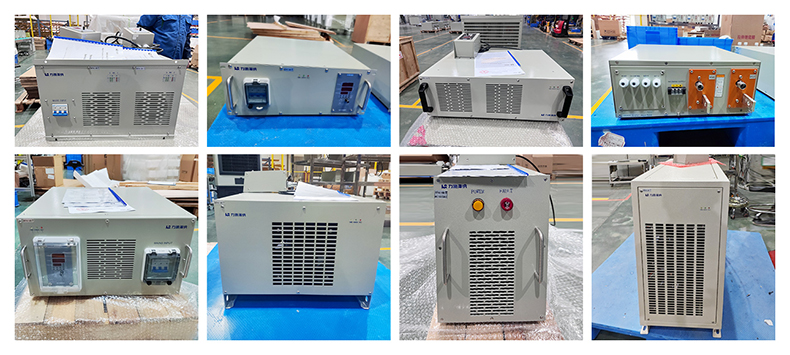
2.Industry application examples:
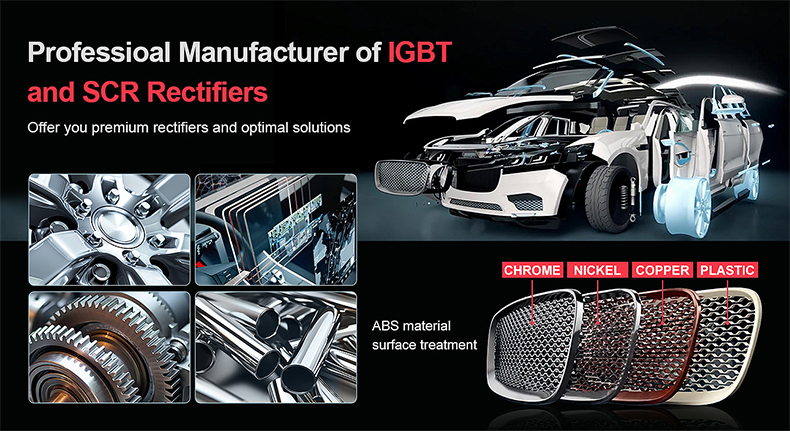
» Technology Advantages
Modular parallel connection
Optional N+1 redundant backup
Capable of online hot maintenance
RS485 digital control function
Low-voltage MOS tube rectification
High power factor, high efficiency
Reasonable structural design
Effective sealed isolation
No water joint design inside the unit
Practical and effective multiple protection system
Full soft switch technology
High reliability
Low noise, high protection level
» Role of electroplating
Protection Against Corrosion
– Shields metal surfaces from rust and chemical damage (e.g., zinc plating on steel).
Increased Wear Resistance
– Hard coatings (e.g., chromium plating) reduce friction and extend part life.
Improved Appearance
– Adds shiny, decorative finishes (e.g., gold plating on jewelry, chrome on car parts).
Better Electrical Conductivity
– Used in electronics (e.g., copper plating on circuit boards).
Enhanced Solderability
– Improves bonding in electronic components (e.g., tin plating).
Repair of Worn Parts
– Restores dimensions and functionality (e.g., rebuilding engine components).
Special Industrial Uses
– Provides heat resistance (e.g., nickel plating in aerospace).
– Used in medical devices (e.g., biocompatible coatings).
» Types of electroplating
› Copper Plating
Purpose: Enhances adhesion for subsequent layers and corrosion resistance.
Note: Prone to oxidation (forms non-conductive copper oxide/green patina). Requires protective coatings.
› Nickel Plating
Purpose: Used as a base layer or decorative finish; improves corrosion/wear resistance. Electroless nickel offers chrome-like durability.
Note: Magnetic properties limit use in electronics (e.g., DIN/N connectors) to avoid signal interference.
› Gold Plating
Purpose: Optimizes conductive contact impedance and signal transmission.
Key: High stability but costly.
› Palladium-Nickel Plating
Purpose: Superior signal transmission and wear resistance vs. gold.
Advantage: Combines palladium’s corrosion resistance with nickel’s hardness.
› Tin-Lead Plating
Purpose: Improves solderability.
Trend: Phased out due to lead concerns; replaced by bright/matte tin alternatives.
› Silver Plating
Purpose: Best conductivity and signal performance.
Note: Conducts even when oxidized but tarnishes over time. Higher cost.
Selection Criteria
Match plating type to application needs: corrosion/wear resistance, conductivity, cost, and environmental regulations.
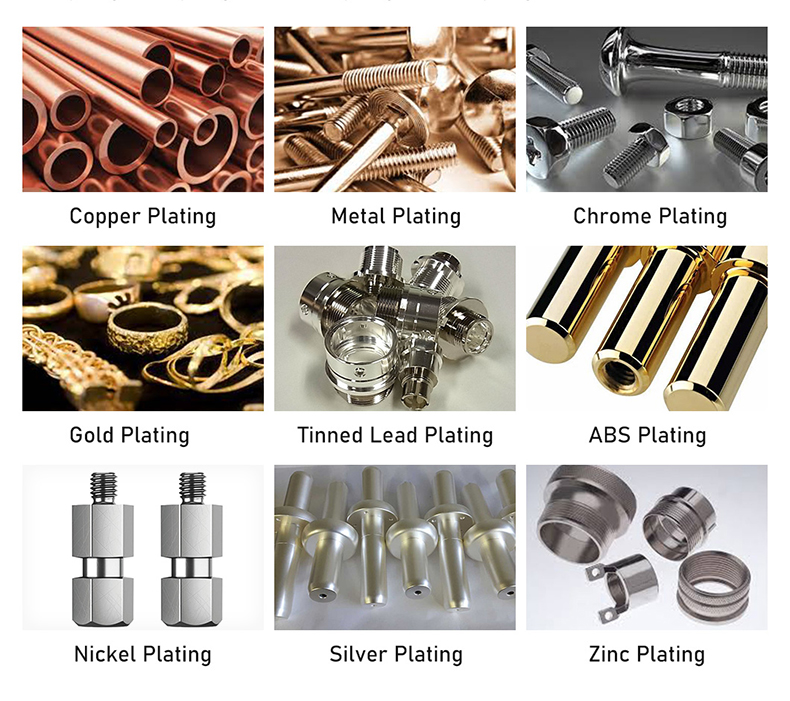
» Elements of Electroplating
› Cathode
The object to be plated (e.g., connector terminals or metal surfaces) where metal ions deposit into a solid coating.
› Anode
Soluble Anode: Made of the plating metal. Dissolves during electrolysis to replenish metal ions in the solution.
Insoluble Anode: Used for precious metals (e.g., white gold, iridium oxide). Does not dissolve but supplies electrons for reduction.
› Plating Solution
Contains ions of the target metal. Composition and concentration determine coating thickness, adhesion, and appearance.
› Plating Tank
Materials: Must resist corrosion and temperature fluctuations (e.g., polypropylene, titanium alloys).
Role: Stores solution and maintains stable plating conditions.
› Rectifier
Converts AC to DC power to drive electrolysis.
Adjust voltage/current to control deposition speed and coating thickness.
› Auxiliary Equipment
Filters: Remove impurities from the solution.
Heaters: Maintain solution temperature.
Stirrers: Ensure uniform mixing.
» Component Part for Electroplating
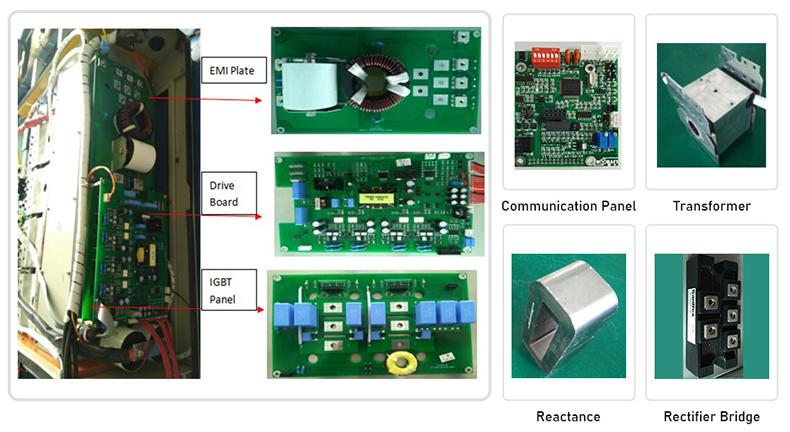
» Cooling Type for Electroplating
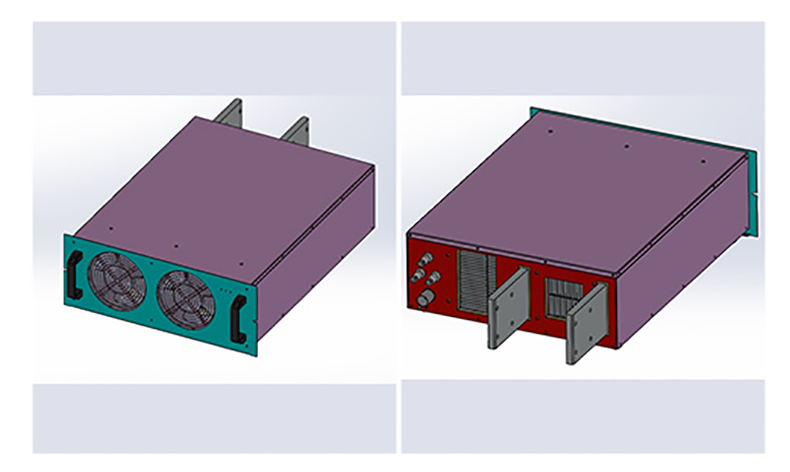
Air Cooling:Heat dissipation fan + air duct + comb heat sink
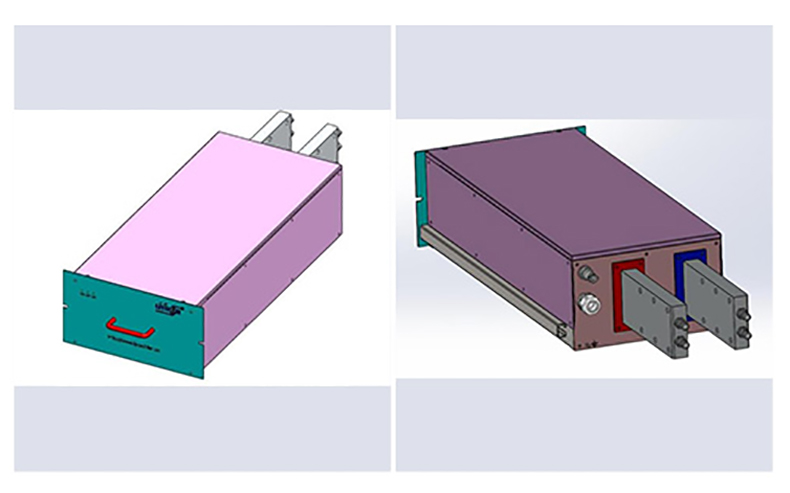
Water Cooling:Built-in water circulation line
» Technical Parameters
| Characteristic Types | Parameter Items | Technical Requirements |
| Power Types | Power types | High-frequency Power Supply |
| Model and specifications | HIFBP-700A/500V | |
| Cooling mode | Air-cooled | |
| Switch tube type | IGBT | |
| Input Characteristics | Rated Input Voltage | Three-phase, AC380V±10% ,50~60HZ |
| Rated Input Power | 37.4KVA | |
| Rated Input Current | AC 56.9A | |
| Input Power Factor | COSΦ≥0.95 | |
| Output Characteristics | Output Voltage | DC 0~500V |
| Output Current | DC 0~700A | |
| Stabilized Current Precision | ≤1%(Rated Current) | |
| According to accuracy | 10A,0.01V | |
| Rated output efficiency | ≥94% | |
| Environmental Conditions | Installation site | Indoor installations |
| Altitude | ≤1500 meters | |
| Ambient temperature | -20℃~40℃ | |
| Relative humidity | ≤90% | |
| Control Mode | Operating Mode | PLC, ADDA, Ethernet, RS485 and RS232 |
» Solution
Liyuan will keep up with the world’s latest technology closely, and uphold the concept of providing customers with high-quality power supplies and professional integrated services.
With advanced design and rich experience in rectifier manufacturing, we will provide the best power solutions as well as the most stable and efficient power supply for users both at home and abroad.
» Technical Capability
LIYUAN rectifier is the most competitive brand in China
Company relies on strong technology research and development cooperation basis, created a number of advanced technology, in recent 3 years amounted to more than 30 to apply for a patent, which has nearly 10 patents of invention.
Equipped with the national electric power transformation and control engineering technology research center (branch), and has set up a loan enterprise academician workstation.
Strict implementation of ISO quality management system, and through the CE safety certification, has been implementing ERP management for many years, to achieve the network, systematic computer control, the formation of a standard, efficient modern management system.
» Qualification certification
Liyuan adhere to innovation and the continuous improvement of power conversion efficiency and product quality.
The increasing R&D investment every year, and cooperation with China’s well-known universities, we has established the research center of national electric power conversion and control engineering technology.
Especially the related core patents of high-power synchronous rectifier power supply, stay ahead of the whole industry in China.
The ISO 9001 quality management system has been fully implemented in Liyuan, including quality inspection of components in warehouse, production process inspection, and final product inspection.

We adopt advanced scientific quality management system and the most stringent testing methods in the whole process to ensure the stability and reliability of products.
» Service
› Packing
1.Small size rectifier packing in carton box separately.
2.Large size rectifier will be packed in wooden case.
3.We guarantee that all the packing is intact when it reaches its destination.
› Shipping
1.30-45 Days after payment.
2.Transport: DHL, FEDEX, UPS, Air shipping, Boat shipping
3.You may choose our shipping partner or your own partner.
› Maintenance
We are pleasant to share our theory and experience on equipment maintenance with users.
We are pleasant to interact with users to collect their tips and know-hows on equipment maintenance.
The module “Maintenance” here is intended to help users solve various problems they possibly encounter during equipment maintenance…
If you need other power electroplating rectifiers, we can custom design them according to customer requirements. Please contact us.
Seeking 500V 700A plasma plating rectifier? Liyuan Haina Rectifier, a professional manufacturer with 27+ years specializing in industrial rectifiers, supplies global clients including the United States, Canada, Britain, Italy, Spain, South Africa, Russia, the UAE, Japan, South Korea, Malaysia, etc. Our advanced factory delivers cost-effective Made-in-China solutions, with competitive prices and customizable options. Contact us for sales inquiries.


